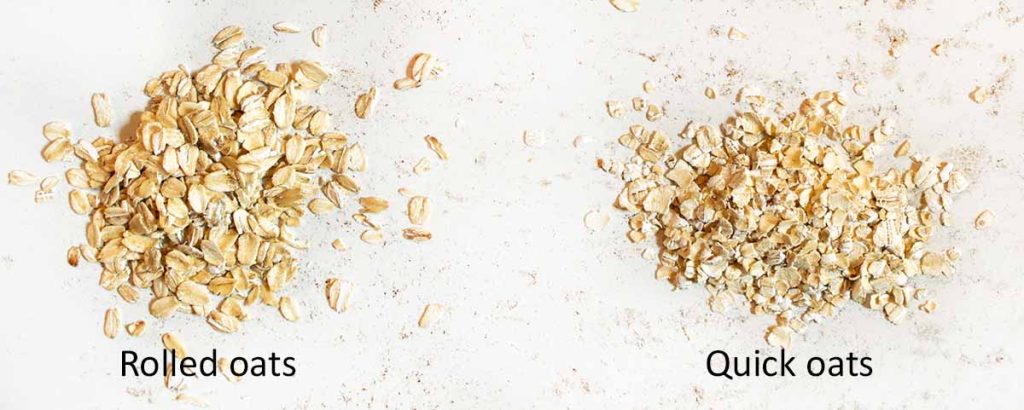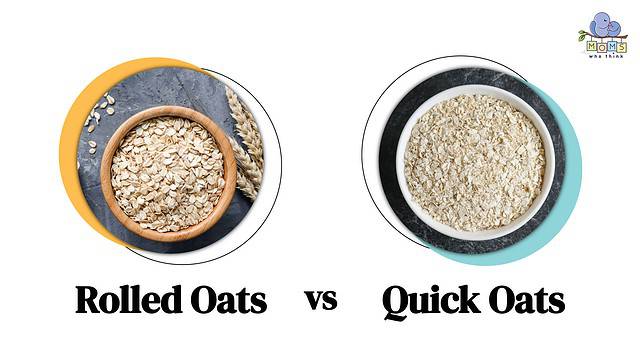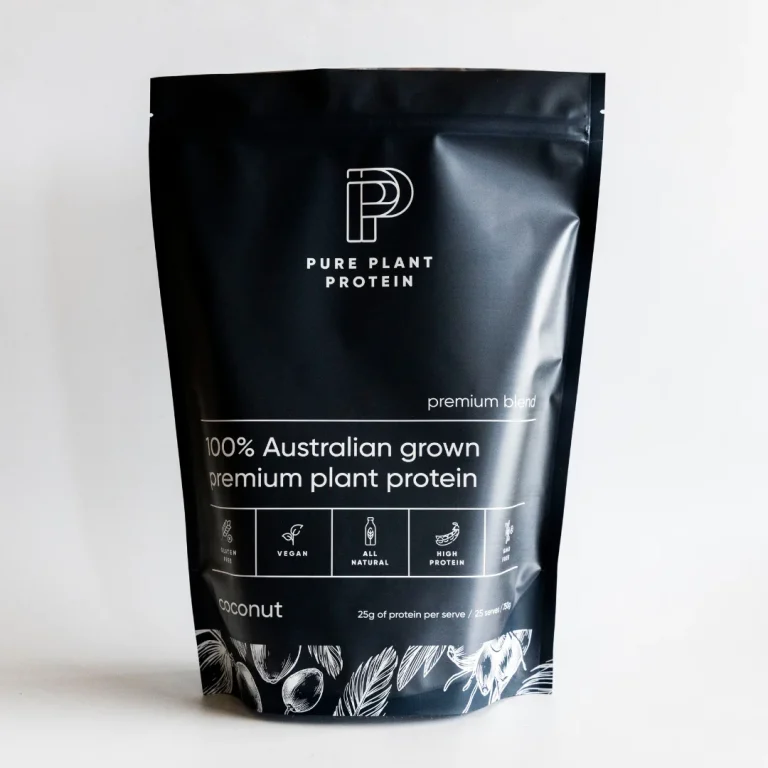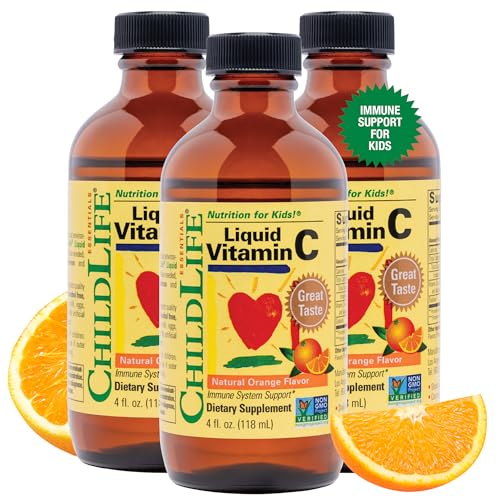Rolled Oats vs Quick Oats : Understanding the Differences

Rolled Oats vs Quick Oats
Oats have long been celebrated for their nutritional value, hearty texture, and versatility in cooking. As the demand for healthy breakfast options continues to rise, the debate between Rolled Oats and Quick Oats becomes increasingly relevant. Both varieties offer their own set of benefits and uses, but many wonder which one is the superior choice. Let’s delve into the characteristics of each variety to understand their distinctions and help you make an informed decision about which oat type is right for you.

Rolled Oats
Rolled oats, commonly referred to as old-fashioned oats, are oat groats that have been steamed and then rolled into flakes. This process stabilizes the healthy oils in the oats, ensuring their freshness. The result is a denser texture and nutty flavor. Due to their thickness, they take longer to cook and typically hold their shape well even after cooking.
Texture and Cooking Time:
The hallmark of rolled oats is their chewy texture, making them a favorite among those who enjoy heartier grains. When prepared, rolled oats take approximately 5 to 10 minutes to cook to the desired consistency, depending on the method used. This longer cooking time contributes to the development of their distinct, robust flavor and chewy texture that many find appealing.
Culinary Uses and Versatility:
Rolled oats are renowned for their diverse culinary applications. They are often featured in recipes for oatmeal cookies, homemade granola, and muesli due to their substantial texture, which lends a satisfying bite and rich flavor to these dishes. Additionally, their ability to hold their shape well makes them a preferred choice for baking and certain savory dishes.
Nutritional Composition:
From a nutritional standpoint, rolled oats are a powerhouse. They are an excellent source of dietary fiber, specifically beta-glucan, which is known for its cholesterol-reducing properties and promotion of heart health. Furthermore, rolled oats are packed with essential vitamins, minerals, and antioxidants, making them a valuable addition to a balanced diet. Their robust nutritional profile positions them as a popular choice for those seeking a wholesome and nourishing meal.
Quick Oats
In contrast to rolled oats, quick oats are a more processed form of oats. They are created by rolling the oat groats into thinner flakes compared to rolled oats, resulting in a finer and softer texture. It’s important to note that quick oats still retain much of the nutritional value of their rolled counterpart and offer their own advantages, particularly in terms of convenience.
Texture and Cooking Time:
The defining characteristic of quick oats is their finer texture, which contributes to their reduced cooking time. Unlike rolled oats, quick oats can be prepared in as little as 1 to 3 minutes, making them an ideal choice for individuals with limited time for breakfast preparation or those seeking a quick and nutritious meal option.
Culinary Uses and Versatility:
Quick oats are prized for their ability to integrate seamlessly into a wide range of recipes. They are commonly used in dishes such as smoothies, porridge, and various baked goods where a smoother texture is desired. Their softer consistency allows them to blend effortlessly with other ingredients, making them an excellent choice for recipes that require a more uniform texture.
Nutritional Composition:
While quick oats undergo additional processing to achieve their rapid cooking time, they maintain similar nutritional benefits as rolled oats. However, due to their thinner flakes and expedited cooking process, there may be slight differences in their glycemic index and absorption rate, which are important considerations for individuals managing their blood sugar levels.

Comparison and Conclusion
Texture and Convenience:
When comparing the two oat varieties, it’s clear that the primary distinction lies in their texture and cooking time. Rolled oats boast a chewier, more substantial texture, while quick oats offer a softer, finer consistency. This difference translates to divergent cooking times, with rolled oats requiring a longer period to reach the desired texture. Quick oats, on the other hand, provide a time-saving advantage, making them an attractive option for individuals with hectic schedules.
Nutritional Value:
From a nutritional perspective, both rolled oats and quick oats offer a wealth of health benefits. They are abundant in fiber, essential nutrients, and antioxidants, rendering them invaluable components of a balanced diet. While the nutritional content remains largely consistent between the two varieties, subtle differences in glycemic index and texture should be considered, particularly for individuals managing dietary requirements such as blood sugar levels and dietary preferences.
Culinary Flexibility:
The culinary versatility of rolled oats and quick oats also merits consideration. Rolled oats’ robust texture makes them a preferred choice for recipes requiring a heartier, chewier mouthfeel, such as cookies, granola, and muesli. In contrast, quick oats are celebrated for their ability to seamlessly integrate into a myriad of dishes, including smoothies, porridge, and baked goods, where a smoother texture is desirable.
Final Thoughts:
In conclusion, the choice between rolled oats and quick oats ultimately hinges on individual preferences, lifestyle, and culinary objectives. While both varieties offer remarkable nutritional value and culinary flexibility, understanding their nuanced differences is crucial in making an informed decision. Rolled oats stand out for their substantial texture, rich flavor, and adaptability in heartier recipes, while quick oats shine for their convenience and swift cooking time, particularly in recipes calling for a smoother consistency.
In the quest for the ideal oat variety, it’s essential to examine personal preferences, time constraints, and specific culinary applications. By doing so, individuals can leverage the unique attributes of each oat type to elevate their meals and reap the nutritional benefits they offer.
See More Relevant Article:
Organic Traveller Vitamin C Serum
FAQs – Rolled Oats vs Quick Oats
Q: What are the main differences between rolled oats and quick oats?
A: The primary differences lie in their texture and cooking time. Rolled oats have a chewier, heartier texture and require a longer cooking time, while quick oats have a finer texture and cook much faster, making them a convenient option.
Q: Are there any notable nutritional differences between rolled oats and quick oats?
A: Both rolled oats and quick oats offer comparable nutritional benefits. They are excellent sources of dietary fiber, essential nutrients, and antioxidants. However, there may be slight variations in glycemic index and absorption rates due to their texture and processing.
Q: Which oat variety is better for baking, such as in oatmeal cookies or granola bars?
A: Rolled oats are often preferred for baking due to their thicker texture, which adds a chewy, hearty element to baked goods. However, some recipes may call for quick oats, especially if a softer texture is desired.
Q: Can quick oats be used as a substitute for rolled oats in recipes and vice versa?
A: Yes, quick oats can generally be used as a substitute for rolled oats in many recipes, and vice versa. However, adjustments may be needed in cooking times and liquid ratios to accommodate their differing textures and cooking properties.
Q: Do rolled oats and quick oats have the same health benefits?
A: Both varieties offer similar health benefits, including promoting heart health, aiding in digestion, and providing essential nutrients. However, the differences in texture and processing may lead to varying effects on blood sugar levels and overall satiety.
Q: Are there specific recipes where one type of oats is more suitable than the other?
A: Yes, rolled oats are often preferred for recipes that benefit from a chewier texture, such as oatmeal cookies, granola, and homemade muesli. Quick oats are suitable for recipes requiring a smoother texture, such as porridge, smoothies, and certain baked goods.
Q: What should I consider when choosing between rolled oats and quick oats for my breakfast?
A: When choosing between the two, consider your texture preference, available cooking time, and the specific dishes you intend to prepare. Rolled oats offer a heartier texture and are ideal for individuals with more time for preparation, while quick oats provide convenience for busy mornings.
About Author

Content Creator at PharmaPULS
Dr. James
Meet Dr. James, a seasoned pharmacist with a rich background spanning over 11 years in the field. His unwavering dedication to healthcare and passion for fostering well-being led to the creation of PharmaPULS. Driven by a commitment to providing accurate and insightful information, he endeavors to empower individuals to make informed decisions about their health. Through PharmaPULS, Dr. James aspires to bridge the gap between medical expertise and public understanding, ensuring that everyone has access to reliable pharmaceutical insights.






